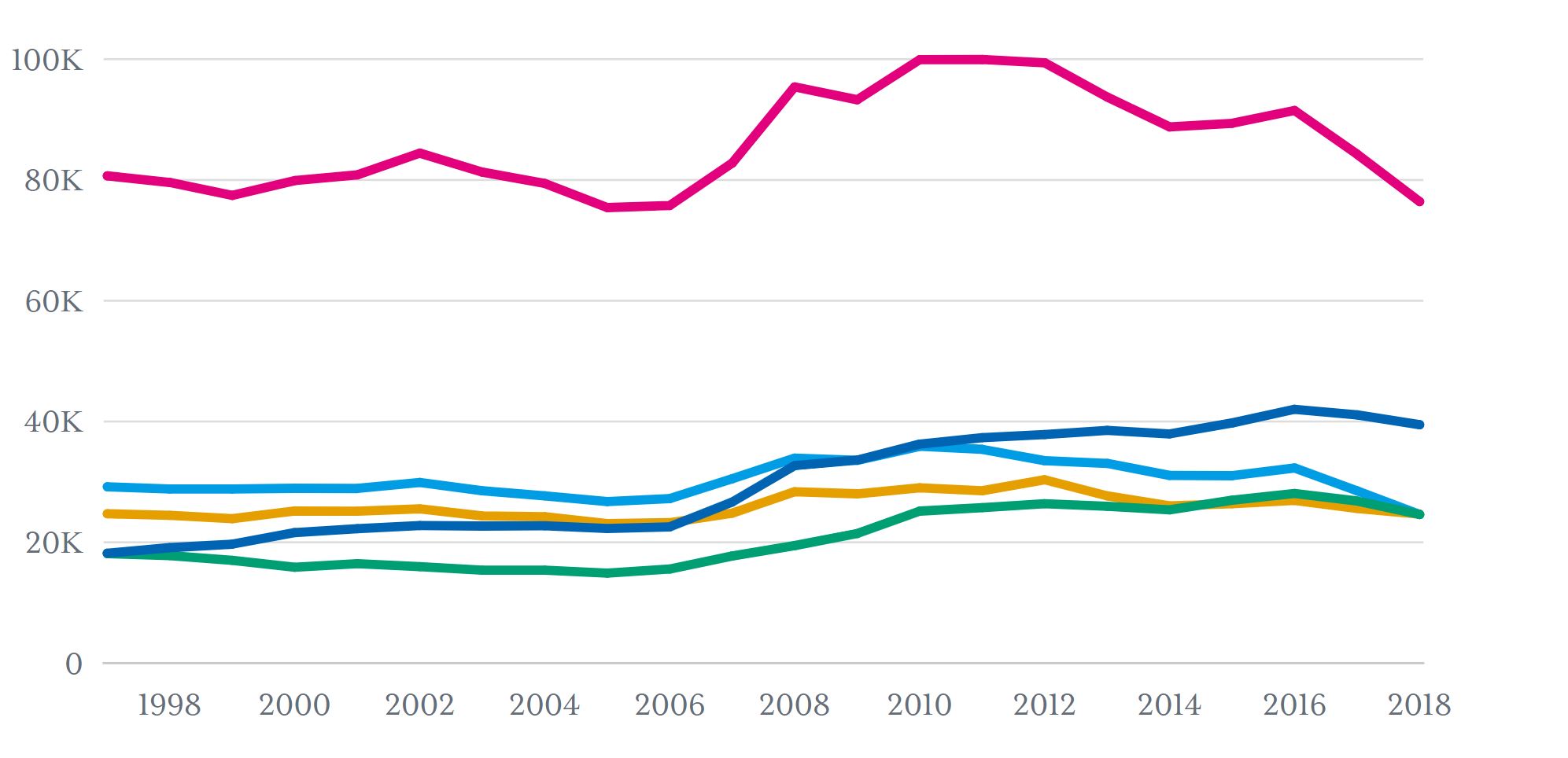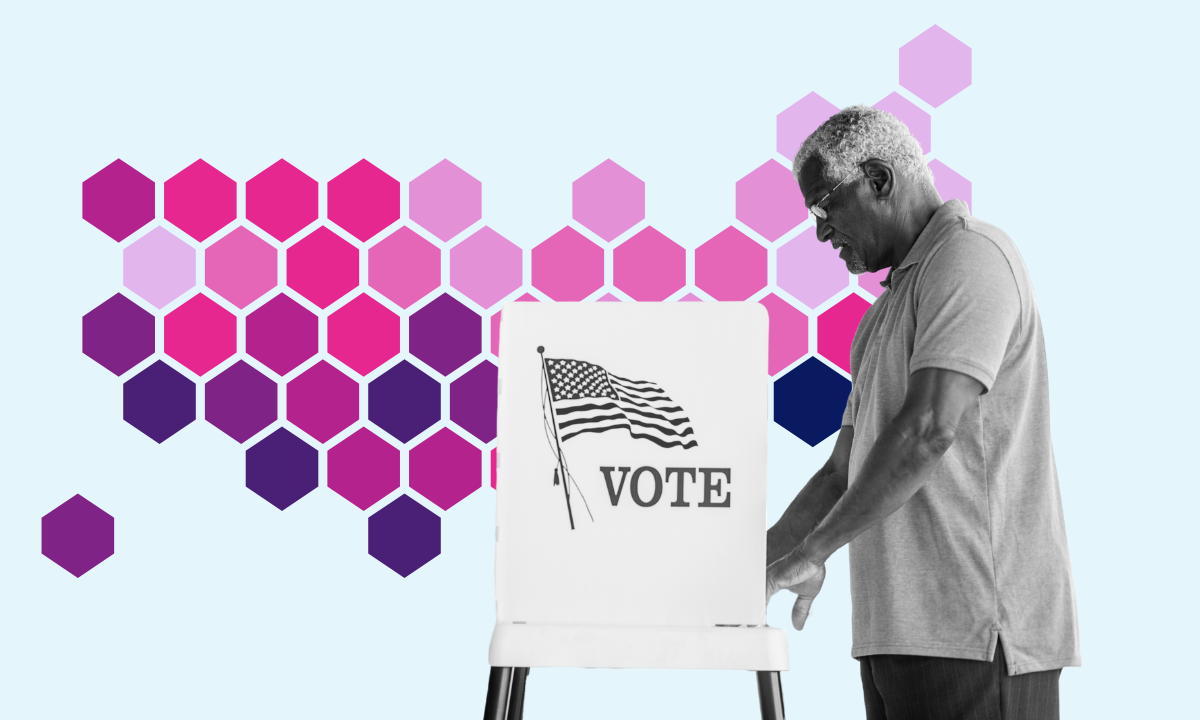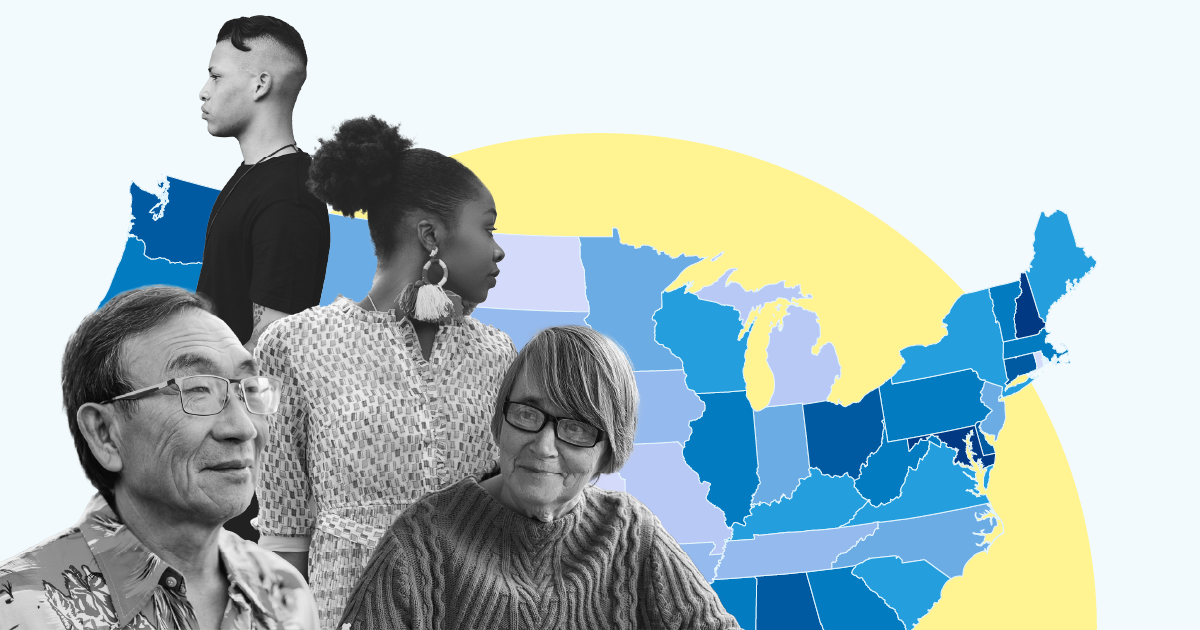Population
Ahead of Supreme Court hearing, here's a look at the data on LGBTQ workplace discrimination cases

An estimated 5.6 million people in the US (1.7%) classify themselves as American Indian, Alaska Native, or a combination of native and one or more races.
These numbers, which come from 2017 Census data, represent racial groups with ties to the indigenous inhabitants of North, South, or Central America, and who maintain some form of tribal affiliation or attachment to their native community.
There are 574 federally recognized American Indian and Alaska Native tribes and villages, and over 100 state-recognized tribes, according to the Bureau of Indian Affairs (BIA). Three-hundred and seventy of these tribes were recognized through treaties ratified by the Senate. The US stopped making treaties with tribes in 1871. Since then, the only way for a tribe to gain federal recognition is through an act of Congress or following federal procedure or through a ruling by a US court.
The United States government and federally recognized tribes operate on a “government-to-government” principle, meaning each treats the other like a separate nation in most respects.
Tribes possess all the powers of self-government, including the rights to:
Tribes cannot declare war, engage in foreign diplomacy, or print and issue their own currency.
A series of Supreme Court cases created a doctrine known as the federal Indian trust responsibility. As explained in the Seminole Nation v. United States decision in 1942, this is the legal obligation by which the US “has charged itself with moral obligations of the highest responsibility and trust” toward American Indian tribes. This means the US is obligated to protect tribal lands, assets, and resources as well as honor the rights established in treaties with the tribes.
Federally recognized tribes are eligible for BIA money and services through direct funding, grants, or contracts. The Indian Health Service, a program by the Department of Health and Human Services, provides tribes with health and educational assistance.
The Federally Recognized Indian Tribe List Act of 1994 formalized three ways for Indian groups to become federally recognized:
An American Indian reservation is an area of land held in trust by the federal government and reserved for various Native American tribes and people.
Approximately 326 reservations, totaling 56 million acres, are held in trusts and administered by the BIA. These include reservations, pueblos, rancherias, missions, villages, and communities.
Reservations range in size. The largest is the Navajo Nation Reservation, which stretches 16 million acres across Arizona, New Mexico, and Utah. California is home to the smallest: 1.32-acres for the Pit River Tribe’s cemetery.
Tribal constitutions, articles of incorporation, or ordinances determine the criteria for tribal enrollment. While membership criteria varies between tribes, requirements usually include “lineal descendancy from someone named on the tribe's base roll or relationship to a tribal member who descended from someone named on the base roll”, according to the Bureau of Indian Affairs. The “base roll” is the original list of tribe members as designated in a tribal constitution or other founding document.
People can apply to join a tribe by contacting a tribe directly.
The Tribal Leaders Directory, published by the BIA, provides contact information for all 574 federally recognized tribes.
Learn more from USAFacts and get the data directly in your inbox by signing up for our newsletter.
Population
Population
Population
Population
Newsletter
Keep up with the latest data and most popular content.


